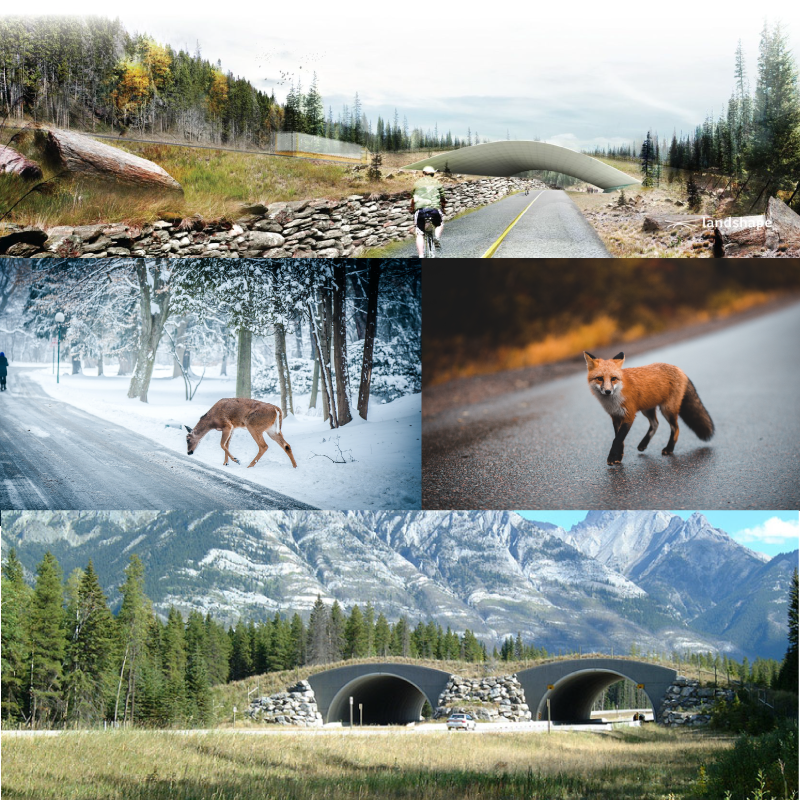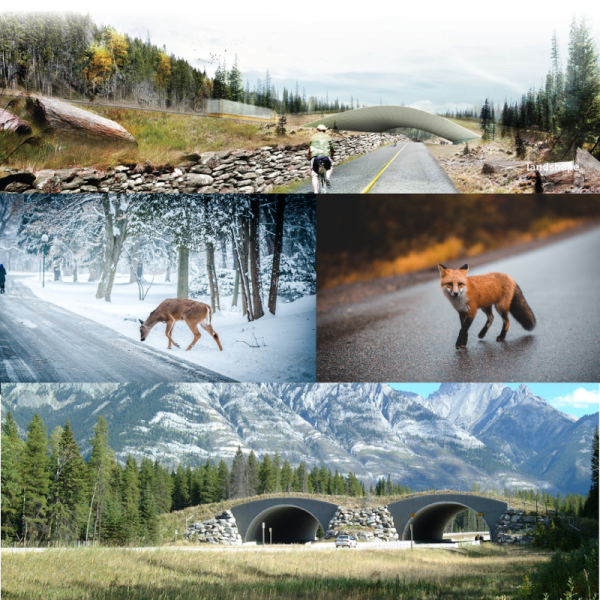WILDLIFE CROSSING INFRASTRUCTURE FOR A GREEN RECOVERY:
EMERGING OPPORTUNITIES FOR INNOVATION IN POST- COVID-19 RECOVERY EFFORTS
While roads are an essential part of modern life, they fragment habitats and landscapes. The effectiveness of wildlife crossing infrastructure (WCI) in reducing wildlife-vehicle collisions and reconnecting landscapes across roads are well documented in scientific literature. There are also many co-benefits derived from implementing WCI, such as increased biodiversity and climate resilience. However, WCI projects are not implemented on a national scale in the US or Canada, in part due to lack of funding prioritization. Both US and Canadian governments have made significant investments in infrastructure to aid in recovery from the COVID-19 pandemic. WCI can be an important element in achieving many of the broad policy goals within Canadian economic recovery spending, yet are largely left out of recovery spending plans. This is in contrast to the United States, who has committed $350 million for WCI implementation, and has explicitly included WCI in several existing infrastructure programs.
As part of the Master Research Paper, a thematic review of the US and Canadian infrastructure and spending plans was conducted to identify emerging opportunities for landscape connectivity and green infrastructure projects. The potential for co-locating WCI with active transportation uses was then explored in greater detail through an integrative literature review. WCI projects can contribute to national goals of climate resilience, economic recovery, and closing the infrastructure gap. However, positioning projects for funding will require strategic communication of the co-benefits of connected landscapes that align with national funding goals.

